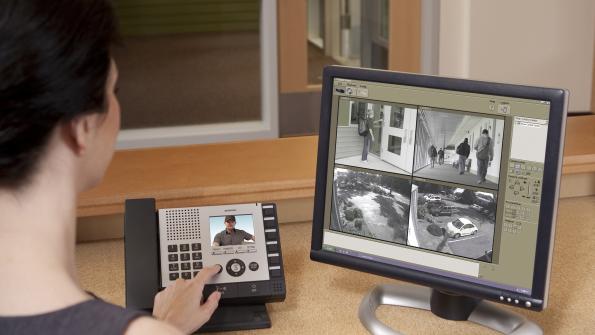Government buildings require layers of security
Consider the challenge security represents to the federal government’s nearly 440 departments and agencies, which own or lease more than 3 billion square feet of building space in over 900,000 structures. Add near countless administrative facilities, courthouses, jails and other buildings operated by state and local governments to get a sense of the need for physical security in the overall government market.
The nature of the tenant and the work conducted in government buildings may make them a target. However, the protection of a building – either for public or private use – is based on the same basic security principles.
In virtually every case, the key to maintaining security begins at the point of entry and includes increasing protective measures such as bulletproof windows and additional surveillance cameras and improving the ability to alert people of a crisis through notifications and alert messages.
Assess risks
Have an experienced security consultant review all potential entry points, including doors, windows, rooftops and HVAC ducts. This kind of review includes a survey of parking lots, lighting and other facilities which may contribute to a building’s accessibility, and it can be used to develop layers of security to create a formidable barrier to entry.
Security tools
The most basic security component is a lock. Today’s locks are generally electronic and are capable of being opened with an ID card, a keypad or a biometric reader.
The next security layer is a video intercom. It consists of a vandal-resistant door mounted near the main entrance, a camera, a buzzer and speaker and microphone for audio communication. The visitor hits the buzzer to request entry, and the staff member can view them and initiate a two-way conversation while sitting safely behind locked doors. Security or first responders can be called if the visitor appears dangerous.
An entry vestibule provides one last barrier between a visitor and entry into a building. It requires the construction of a wall and a door with another electronic lock, which leads to an office counter.
This is part of a visitor management system. Visitors are required to swipe a government-issued photo ID through the system to check the name and other information against federal and state criminal databases. Each facility can create its own visitor watch lists. If approved, the visitor receives a temporary photo ID to wear at all times within the building.
Security screens at the main entry point are another important security measure. The screens, made of stainless steel mesh, are highly resistant to gunshots, knives and clubs and significantly slow a gunman’s entry into the building. Bulletproof glass, really bullet resistant, accomplishes these same goals, but at a greater initial cost.
Fencing, gates and signage help funnel visitors from the street or parking lot to the main entry. Signs can also explain how to use the video intercom to begin the entry process.
Designate one entry for employees. Provide each person with an access card, which can double as an ID badge. An access system can provide a record of who has entered and left through a door.
For delivery doors, another video intercom works best. Make vendors go through the same protocol, buzzing the office for entry. Multiple units can be tied into one master station, allowing for centralized control of all entry requests.
Panic buttons concealed throughout the building, or worn by department heads as a pendant, allow for immediate contact of security personnel or other first responders in case of an emergency event.
Audio intercoms enable security personnel to simultaneously share instructions with all offices in the event of lock-in-place or evacuation situations. Emergency notification systems can provide text messages, email or voice mail instructions to employees both in and out of the building.
Surveillance cameras act as a deterrent to crime. When placed around the exterior perimeter, they provide live video to help identify and intercept a potential criminal prior to entry. Recorded video helps make identifications and analyze events after the fact. However, camera systems are the most expensive security tool.
Plan and practice
Even the best security equipment can fail to do its job without proper planning and procedures. Office personnel need equipment training and clear guidelines for approving visitor access. Staff must understand doors cannot be left propped open for any reason. Employees should challenge any person in the building without an ID badge. Put these and other policies into writing, share them with staff and then practice them in regular drills.
Layering these security measures and educating staff on the proper way to use and enforce them provides an affordable, effective and easily repeatable way to secure a building.
John Mosebar serves as vice president of marketing for Aiphone Corp. He is a 32-year veteran of the company, a leading manufacturer of security video intercoms. For more information about Aiphone, click here.
_____________
To get connected and stay up-to-date with similar content from American City & County:
Like us on Facebook
Follow us on Twitter
Watch us on Youtube




















